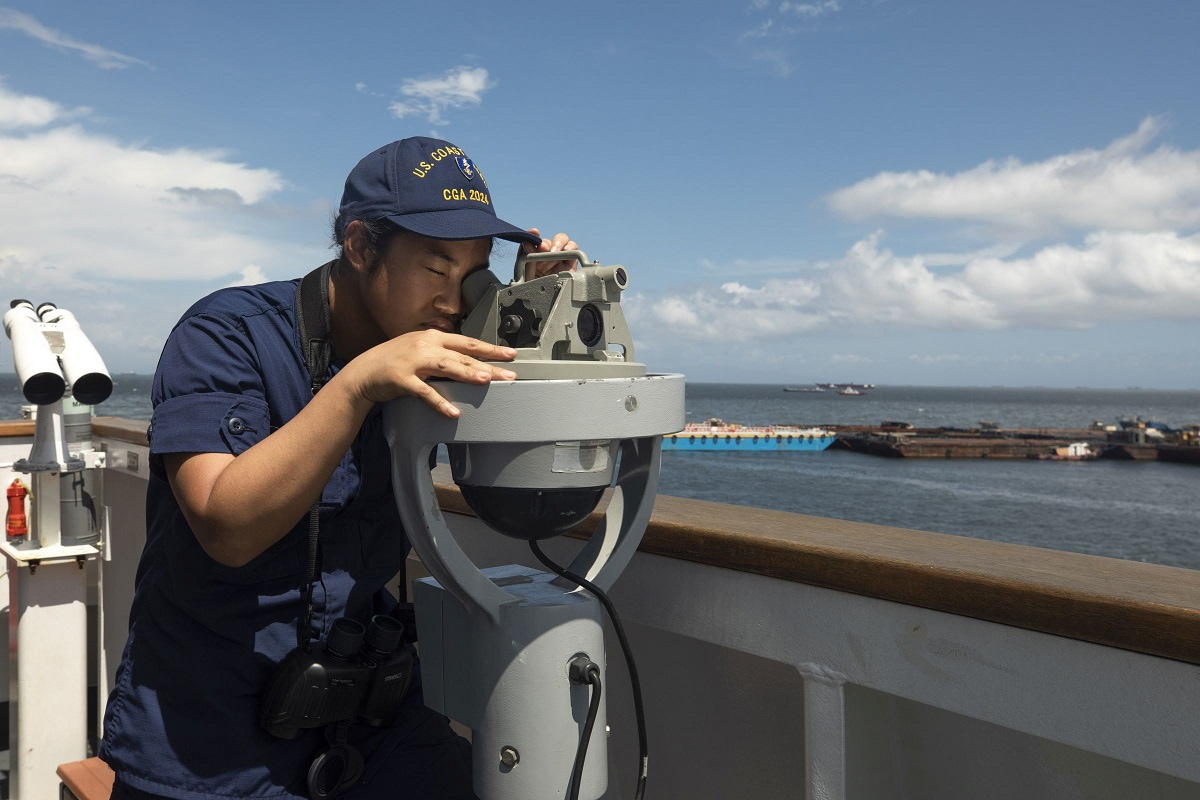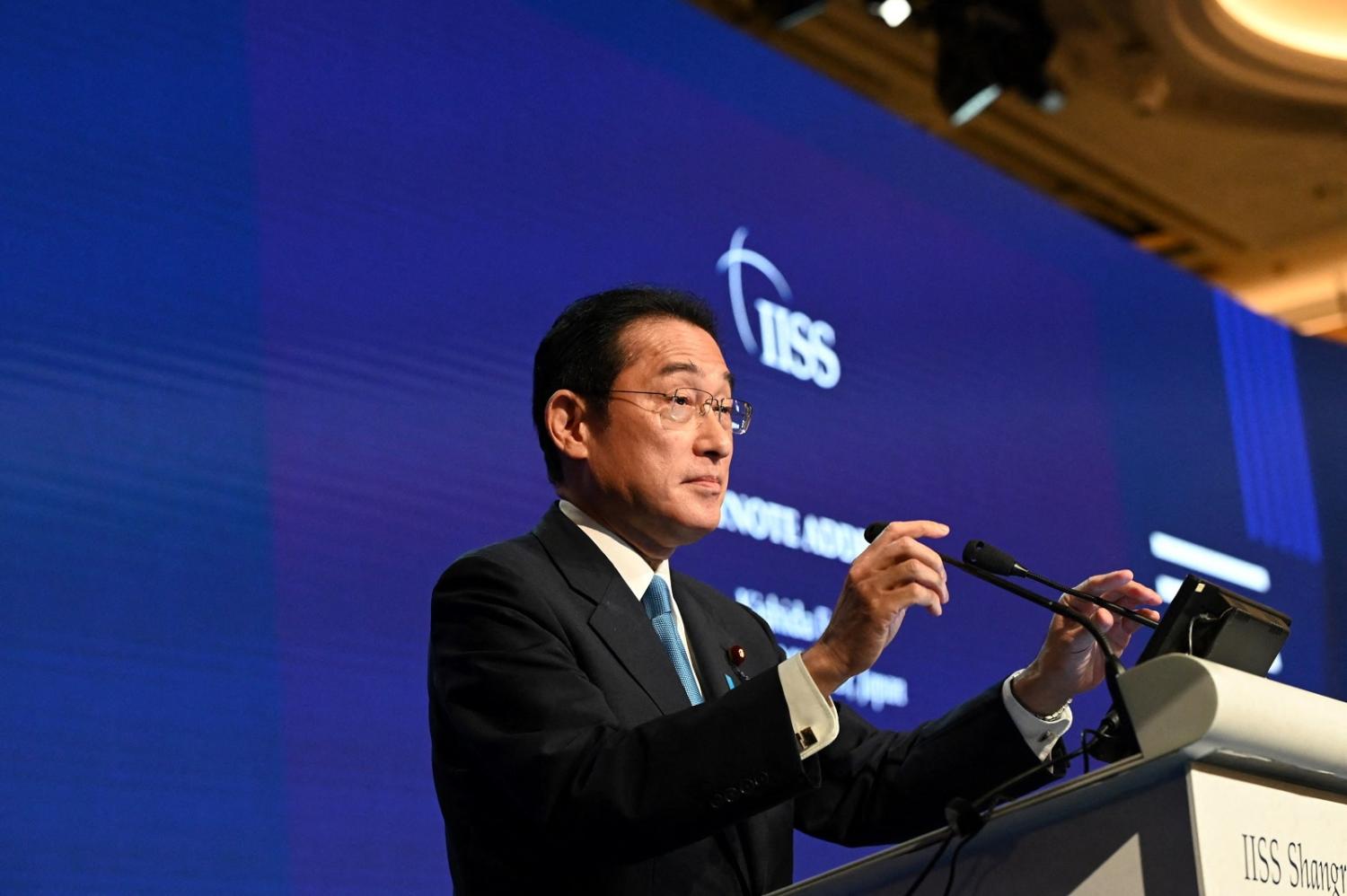During his keynote address at the Shangri-La Dialogue in Singapore last year, Japanese Prime Minister Fumio Kishida announced a momentous shift in his country’s post-war foreign policy. For more than half a century, Kishida argued, Japan’s international role focused on “making contributions mainly in the economic field”.
But it was now time for his nation to embrace a more comprehensive role, since “the responsibility Japan must fulfill is heavy”. Kishida spoke of growing uncertainties in the regional security environment, though he neither directly named China as the culprit nor openly raised doubts over US wherewithal and commitment to Asia.
Announcing a new era of “realism diplomacy”, Japan has accordingly vowed to double its defence spending as a percentage of its GDP, while also developing its own defence industry with a focus on next-generation technology, including long-range missiles and fighter jets. Kishida made it clear that his country won’t stand idly by as revisionist forces seek to challenge a rules-based order in the region.
And it’s in Southeast Asia where Japan’s new geopolitical assertiveness is most palpable. This month, Kishida made a historic trip to the Philippines and Malaysia to launch Japan’s new Official Security Assistance (OSA) initiative, which aims to enhance the maritime security capabilities of likeminded regional states. Japan is also doubling down on its efforts to provide literally concrete alternatives to China’s Belt and Road Initiative (BRI) projects, which have faced immense obstacles in recent years.
In many ways, Japan is fast emerging as the most comprehensive strategic partner of key Southeast Asian states, most notably the Philippines. In fact, the two fellow US allies are exploring nothing less than a new Visiting Forces Agreement-style deal, which would facilitate large-scale joint military drills in coming years. And with an eye on Taiwan, the two countries are building the foundations of a trilateral Japan–Philippines–US (JAPHUS) alliance in order to deter any potential Chinese kinetic action against the self-ruling island nation.

It’s hard to overstate Japan’s actual influence in Southeast Asia. Despite all the publicity around China’s BRI, Japan remains the leading source of high-quality, big-ticket infrastructure in the region. Japan’s pre-pandemic infrastructure commitments across the region’s six biggest economies, for instance, were valued at $367 billion – far larger than China’s $255 billion.
If anything, Japan is poised to fortify its position as the leading economic player in Southeast Asia. Over the past five years, China’s BRI-related activities are down by some 40 per cent due to economic slowdown, pandemic-related supply chain disruptions, and debt distress, as well as regulatory hurdles in recipient nations.
Over the past decade, largely thanks to the late Prime Minister Shinzo Abe’s proactive foreign policy, Japan has also gradually emerged as a key maritime security partner to Southeast Asia. In particular, Tokyo provided modern patrol vessels to coast guard forces of the Philippines, Vietnam and Malaysia.
In fact, almost single-handedly Japan helped the Philippine Coast Guard (PCG), which only became an independent maritime law enforcement agency in the late-1990s, become arguably the most formidable in all of Southeast Asia. Crucially, the Philippines has also hosted several landmark military activities by Japan in recent years.
In 2018, for the first time in the post-war period, the Japanese Self-Defence Forces deployed an armored vehicle unit to join in that year’s Philippine–US Balikatan war games. Last year, Japan marked yet another milestone when it deployed fighter jets for joint exercises with the Philippine Air Force.
Earlier this year, Japan conducted the first-ever trilateral coast guard exercises with the Philippines and the United States in Manila’s waters. This was soon followed by the first-ever quadrilateral joint patrols by Japan, the United States, Australia and the Philippines in the South China Sea amid rising tensions between Manila and Beijing in the area.
During his visit to Manila, Kishida became the first-ever Japanese leader to address the joint session of the Philippine Congress, underscoring the depth of bilateral relations. He also unveiled Japan’s OSA initiative, which includes a $4 million grant to provide a coastal radar system for the Philippine Navy. In addition, Japan is also expected to fund five more 97-metre vessels for the PCG.
Already a top investor and source of development aid, Japan has also indicated its interest in pitching in after the Philippines signaled it would pull out of some of China’s BRI projects in the country. In neighbouring Malaysia, the other major beneficiary of the OSA initiative, Kishida announced expanded maritime security assistance and development cooperation. Vietnam is most likely next.
Kishida’s greatest prize, however, is the proposed Japan–Philippines Reciprocal Access Agreement deal, which would facilitate large-scale Japanese military exercises with Filipino counterparts in the near future. The Philippine legislative leadership, which would have to ratify any VFA-style deal, has indicated its full support for such a partnership.
Expanded security ties with key Southeast Asian nations not only boost Japan’s defence industry, but also allow the country to more effectively project power in its neighbourhood. Amid growing fears of Chinese kinetic action against Taiwan, Japan is also interested in expanding its military presence in the Philippines, which has already granted the Pentagon access to strategic bases near Taiwan’s southern shores.
The ultimate objective is to develop an increasingly robust trilateral Japan–Philippines–US alliance, which would be crucial to deterring any major military action by China. Overall, Southeast Asia, and the Philippines in particular, has become the linchpin of Japan’s new defense policy and more assertive security role in Asia.

